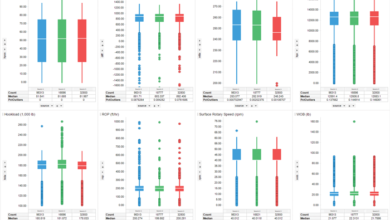A broken model: Data ownership, sharing, control still await solutions
Industry leadership will be required to meet growing need for central data integrator that enables sharing of standardized data, control of data access
By Andrew Bruce, DataGumbo

For the past 10 years, as the technologies to collect, share and analyze huge amounts of data expand across various industries, leaders in the upstream oil and gas industry have called for workable data solutions for their specific needs. Executives in the drilling industry deal with multiple stakeholders in the form of operators, rig owners, service companies, original equipment manufacturers (OEMs), standards organizations and government regulators, each with their own needs and agenda. The data itself is collected from a dizzying array of machines, control systems and sensors, using multiple versions of multiple standards.
Current state
The current model of data sharing in the drilling industry is broken. With data available from electronic drilling recorders (EDRs), drilling control, well control, ship control systems and downhole tools, a rig owner is looking at five or more systems generating data on each rig. Additionally, control system software varies from rig to rig, so even two top drives from a single vendor with sequential serial numbers may have 3-5% different signal naming conventions in the programmable logic controller (PLC). Further, although WITS, WITSML and OPC-UA, etc, can be used to collect and share data, there is not an industrywide accepted standard for modeling this data. Even if there was, constant updates would be required as new tools and software are deployed.
Drilling contractors have two main options for integrating data from these disparate sources: costly custom development or costly big platform solutions from established IT vendors.
Several top 10 onshore and offshore rig owners have chosen to develop their own data collection, analytics and dashboard solutions, which require IT resources to develop and maintain. Due to the home-grown nature of these solutions, each additional integration with business intelligence or analytics tools requires another layer of custom development. These systems are also not interoperable with those of operators and service providers, so while they may be good at meeting the requirements of the rig owner, they usually require even more custom development to provide data to operators and third parties.
The other current option for data management – buying a full platform solution from a major IT vendor – comes with different drawbacks. While these solutions offer a variety of options and functionality, the cost just for a proof-of-concept implementation approaches $1 million for an offshore rig. Further, as these solutions are sold as an entire “stack,” the rig owner is pushed to provide the maximum amount of data for use by the providers’ analytics, machine learning and artificial intelligence (AI) tools to justify the costs of the platform. Finally, if the rig owner wants functionality that isn’t already part of the platform, they end up having to pay for customized development.
This current model is broken because regardless of which option drilling contractors choose, there is no central integrator for data that allows users to easily add and remove both data and functionality.
Future state
There are three main issues to solve in this space:
• Data ownership: How can it be determined who “owns” the data?
• Data sharing: How, technologically, can the data be collected, standardized and shared?
• Data control: Having accomplished the first two, how can access to the collected data be controlled?
Data ownership
From a purely technological perspective, this is the easiest question to solve. The ownership of data generated over a particular contract is governed by the terms of the contract, regardless of the technological solutions in place. A rig owner may negotiate a contract with its OEM to provide logs of virtually all signals captured in its drilling control system. Since the downturn began in 2014, OEMs have become much more willing to work with rig owners to ease access to the data from their machines, where formerly they took an approach similar to John Deere in restricting equipment owners from access to their own machines’ data.
An operator may establish ownership of the log of parameters used by a rig owner while drilling its well. A rig owner may agree with an OEM to stream certain data back to the OEM for the purposes of establishing a condition-based maintenance program. Several operators put ownership of “all” data into their contracts.
Within this overlapping framework of contracts covering legal ownership of the data, there seems to be a broad consensus that, while certain data related to the construction of the well is confidential and proprietary to the operator, there exists another category of machine data that is most useful to the rig owner and their vendors for the optimization of operations. A well engineer likely doesn’t care about the state of a lube oil level or vibration sensor, while the rig owner’s maintenance team may care very much about these signals. There is room for a consensus to share data for win-win purposes, such as preventing well control incidents, minimizing downtime, streamlining regulatory reporting and implementing condition-based maintenance. As more rig owners reach agreements with their equipment vendors for fee-based maintenance – in the vein of the “power-by-the hour” model pioneered by Rolls Royce – it’s likely that contract addendums stating what data can and shall be shared, rather than just blanket ownership statements, will be the norm.
As a result, the ideal platform for the collection, integration and distribution of data must be configurable to handle any ownership scenario negotiated between the parties. The ideal system assumes:
• In general, operators may still require legal ownership of “all” data in contracts;
• However, there is a general agreement that much of the data is of use only to the drilling contractor and their vendors; and
• As the industry adopts fixed-fee or incentive-fee maintenance contracts, contract addendums will begin to require the sharing of much data.
Data Sharing
The data generated in the process of planning, drilling and completing a well “lives” in a variety of systems, most of which are not connected to one another. Several solutions exist already to collect all of the planning and paperwork aspects of drilling a well, so let’s focus on the data generated from the various machines involved.
The systems vary in complexity, from a mud pump controlled by a rheostat to a dual-activity drillship. However, the data generally comes from individual machine and tool PLC or single-board computers, add-on sensor systems, or complex control systems, such as complex OEM control systems for a rig’s drilling equipment. This data is captured and communicated in a finite number of languages and standards, but the variation in both standards and the actual signal identifiers means no two rigs are alike.
To share in a useful way, all of this data must be collected, cleaned and standardized, and it must be mapped to an industry data model to make it conveniently searchable to end users. One large land drilling contractor recently observed that its three main data customers were the operators, regulatory agencies and its own internal users, each of which wanted similar data sets presented at different levels of granularity. One user may want to dump every signal collected at 1 hertz into a big data analytics solution, while another may just want total feet drilled per day for each of their rigs. The solution must be able to allow different users to easily establish their requirements around what data they need, including level of detail, frequency of use and end destination. At the same time, this data must be quality-checked as part of the collection process so that all parties can trust the data and make business decisions based on their analysis.
Examples for how this should work can be found in other industries. On the data generation and collection side, the US Navy has adopted the Data Distribution Service standard, which is explicitly built to handle publishers of data, from a single sensor to an entire ship, coming onto and leaving networks continuously, while consumers of the data are also constantly added and removed. The parallel is to an operator that has a changing mix of rigs and production equipment publishing data into its systems, as well as an ever-changing list of users and programs consuming that data. Another model to learn from is that of smart phones, where the owner can download and install an app, and then easily manipulate the permissions of that application for access to the user’s data, such as location or microphone access. Also from the world of smart phones is the concept of an application programming interface (API) for the phone, which allows developers to build and test software for that phone that will be guaranteed to work prior to deployment.
The drilling industry needs an integrator that provides similar features:
• The ability to (relatively) easily add and remove sources of data from the network;
• A central data model that standardizes and cleans data from various sources;
• An API that provides easy access for developers of software to consume the data;
• Excellent, granular control of access and permissions for data owners; and
• The ability to pass data from one software application to another to create a “process flow” on top of the aggregated data.
Data Control
Once the question of data ownership and a system to collect, clean and share the data are solved, there remains the problem of controlling access and securing the data. All stakeholders have reason to safeguard access to data. The owner of a given piece of data needs the ability to grant and revoke access to the data for various users over the life of the contract and, more broadly, the life of the well. Owners need to be able to see at a glance what entities have access to their data, from the level of a single signal to everything coming from a particular platform or field, and add or remove access on the fly.
Another convenient feature would allow data owners to authorize standard sets of data for particular types of users and applications, either for a single well or groups of them. For instance, a rig state detection application may need the same 30 signals from every rig – the rig owner could identify these standard signals, associate them with the application, and then grant access to those signals across all rigs, without ever knowing the details of a particular piece of equipment or signal from a given rig. Another commonly requested feature is end-to-end encryption of the data, so that even if an unauthorized user intercepted the data, it would be cost-prohibitive to decrypt it without the authorization key granted by the data owner.
The ideal system for oilfield data integration would include these features:
• Every piece of data collected is associated with the rig or facility that generated it, which includes a concept of ownership;
• Every piece of data collected is associated with the well it relates to;
• Data owners can control access to their data from entire rigs to single signals and easily give or revoke access to users and program; and
• All data is encrypted from collection point to access point through the API.
Conclusion
The upstream oil and gas industry requires a platform that establishes data ownership, enables sharing of clean and standardized data, and allows data owners to control access to the data. Operators, rig owners and service providers have called for such an integrator for at least the last 10 years. With the evolution of the software platform business model, big data analytics solutions and condition-based maintenance programs, the demand has never been higher. The good news is that all of the technological aspects of this problem are eminently solvable with current tools. What’s needed now is for a few of the operators and rig owners to take the lead and start fielding a solution that finally breaks down the barriers to data sharing across all stakeholders in the industry. DC
This article is based on a presentation at the 2017 IADC Advanced Rig Technology Conference, 24-25 October, Amsterdam.





